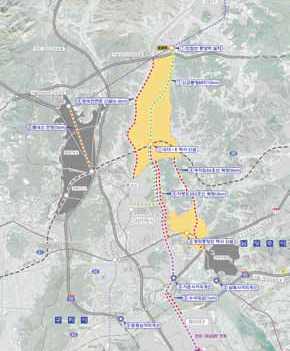Main Projects
S-BRT
- S-BRT
- As of now, most of the BRT services in operation are at the level of designating bus-only lanes, which has led to an increase in demand for a better service, the Super-BRT, that provides a subway-level transport service by securing exclusive roads, vehicles, and priority traffic signals.
S-BRTs are planned to be introduced in the transportation measures for land development projects, etc., but lack of a clear definition of the S-BRT service and the standards for facility installation and operation must be addressed beforehand. Therefore, within 2019, standard guidelines for the introduction of S-BRTs will be established and S-BRT pilot projects conducted.
- Business Scale
-
- Establishment of standard guidelines for S-BRT (’19.9) Provide guidelines for installation and operation of vehicles, roads, and facilities required for S-BRT services to be at the level of subways
- Commencement of S-BRT pilot project (’19.12~)
Selection and implementation of pilot projects after reviewing the feasibility and effect
Conducting projects considering the S-BRT installation and operation plans that meet the standard guidelines in the transportation measures for the 3rd New Town initiative (Wangsuk District, Gyeyang Techno Valley) (’19.9)

-
Namyangju Wangsuk District
- Location
- Gyeonggi, Namyangju-si, Jinjeop/Jingun-eub, Yangjeong-dong
- Area
- 11,340,000 m² ((3,430,000 pyeong = 2,690,000 pyeong (Wangsuk 1) + 740,000 pyeong (Wangsuk 2)
- Housing Units
- 66,000 units (53,000 units [Wangsuk 1] + 13,000 units[Wangsuk 2])
- Project Operator
- Korea Land & Housing Corporation, Namyangju City Urban Corporation